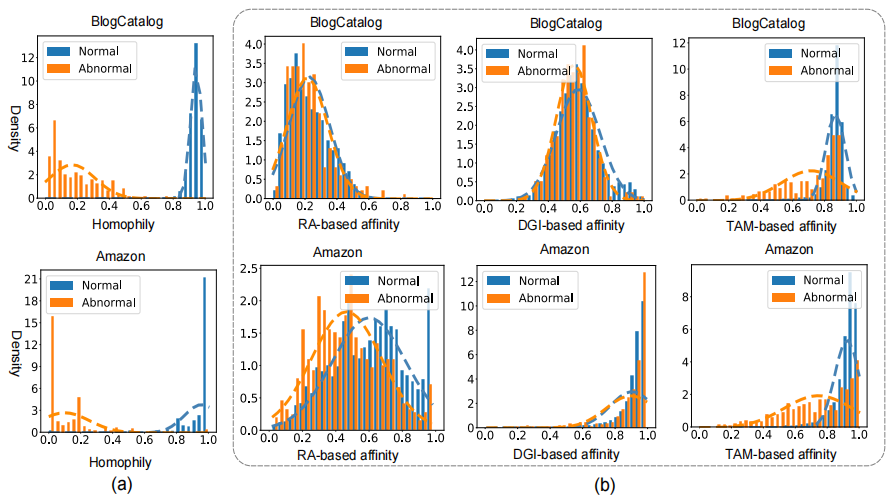Truncated Affinity Maximization: One-class Homophily Modeling for Graph Anomaly Detection
We reveal a one-class homophily phenomenon, which is one prevalent property we find empirically in real-world graph anomaly detection (GAD) datasets, i.e., normal nodes tend to have strong connection/affinity with each other, while the homophily in abnormal nodes is significantly weaker than normal nodes. However, this anomaly-discriminative property is ignored by existing GAD methods that are typically built using a conventional anomaly detection objective, such as data reconstruction. In this work, we explore this property to introduce a novel unsupervised anomaly scoring measure for GAD, local node affinity, that assigns a larger anomaly score to nodes that are less affiliated with their neighbors, with the affinity defined as similarity on node attributes/representations. We further propose Truncated Affinity Maximization (TAM) that learns tailored node representations for our anomaly measure by maximizing the local affinity of nodes to their neighbors. Optimizing on the original graph structure can be biased by nonhomophily edges (i.e., edges connecting normal and abnormal nodes). Thus, TAM is instead optimized on truncated graphs where non-homophily edges are removed iteratively to mitigate this bias. The learned representations result in significantly stronger local affinity for normal nodes than abnormal nodes. Extensive empirical results on 10 real-world GAD datasets show that TAM substantially outperforms seven competing models, achieving over 10% increase in AUROC/AUPRC compared to the best contenders on challenging datasets. Our code is available at https://github.com/mala-lab/TAM-master/.
PDF Abstract NeurIPS 2023 PDF NeurIPS 2023 Abstract


